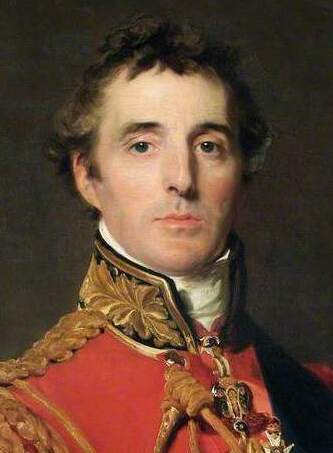In recent weeks, we’ve witnessed a debate over whether or not one of the central streets of the downtown core should be renamed. As a result of that debate, we’ve also gotten a civic history lesson or two on the founding of Ottawa.
In truth, the names of Wellington and By should be forever linked in the minds of Ottawans for one reason: the city as we know it today could not exist without either of them.


 The first Duke of Wellington, one Arthur Wellesley, was the man who, in his role as Master-General of the Ordnance of the United Kingdom, gave the order for the building of the Rideau Canal. Relations with the United States were still tense in the wake of the war of 1812 and shore guns along the American side of the St. Lawrence threatened to cut off Upper Canada ( Ontario) from Lower Canada (Quebec) in the event of further hostilities. Wellington knew that an inland canal would keep communications and freight safe from American aggression; as the commander who had defeated Napoleon Bonaparte at the Battle of Waterloo his opinion on military matters carried great weight.
The first Duke of Wellington, one Arthur Wellesley, was the man who, in his role as Master-General of the Ordnance of the United Kingdom, gave the order for the building of the Rideau Canal. Relations with the United States were still tense in the wake of the war of 1812 and shore guns along the American side of the St. Lawrence threatened to cut off Upper Canada ( Ontario) from Lower Canada (Quebec) in the event of further hostilities. Wellington knew that an inland canal would keep communications and freight safe from American aggression; as the commander who had defeated Napoleon Bonaparte at the Battle of Waterloo his opinion on military matters carried great weight.
Lieutenant Colonel John By, then of the Royal Engineers, was the man assigned by the “Iron Duke” in the spring of 1826 to get that work done. Small wonder, therefore, that Wellington should be honoured – repaid? – by having one of the first two streets laid out on the ground that year named for him.
(The other, of course, was Rideau Street. More on that particular namesake in a future installment.)
 Although there were other settlements scattered across the Ottawa Valley by that point, none seemed ideal as a base camp for the northern end of the process, and so ByTown – later Bytown – was founded. We know what happened to that settlement, of course, and as a result, a street, a riverfront roadway, and an entire neighbourhood were named in his memory and honour.
Although there were other settlements scattered across the Ottawa Valley by that point, none seemed ideal as a base camp for the northern end of the process, and so ByTown – later Bytown – was founded. We know what happened to that settlement, of course, and as a result, a street, a riverfront roadway, and an entire neighbourhood were named in his memory and honour.
Not that the Lieutenant-Colonel got to enjoy much of the benefits in his lifetime, despite being there for the naming itself. The Lieutenant-Colonel was called on the carpet more than once during that six-year construction process; the British government questioned his use of then-unproven technology in construction of the canal’s locks and he faced continual opposition to his cost overruns. In the end, it was those overruns that finally finished his career in the military, despite documented orders from Wellington “not to wait for Parliamentary Grants, but to proceed with all despatch consistent with economy,” and despite By’s meticulous book-keeping which he produced as evidence of his careful management when he got back to London.
Some might argue that the manner in which By was treated by the Parliamentary Committee on Canadian Canal Communications back in London supplied the template for how the colony – soon to be the Dominion of Canada – learned to deal with people who got useful work done in praiseworthy fashion.

3 comments
Thank you for this engaging and interesting tidbit from history. I thoroughly enjoyed it.
The ByWard Market neighbourhood is named after the ByWard Market–the market in By Ward, named for Colonel By. There was also a market in Wellington Ward, located roughly where the arch is between the memorial buildings on Lyon just south of Wellington Street.
So really, the ward was named for Colonel By, the market named for the ward, and the neighbourhood named for the market. Not that the neighbourhood was directly named for By.
Wellington beers share the same name as the street:
http://www.wellingtonbrewery.ca/?page_id=7